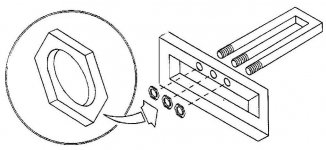Higgins909
Aluminum
- Joined
- Nov 19, 2018
So, the drill is .166 and M5 x .8 if I remember right. The drill corners go to .400" and the tap goes .394" +-.005" Material is a gummy steel. Is this even possible? We then got word that we can drill to .450" max. We usually use a ground screw or plug gauge to measure threads... if that's even the correct way to measure threads. It's in a lathe, there is some kind of tapping head that moves outwards. (I guess so it doesn't break the tap) I found the only Spiral Flute tap in shop, but we usually use a plug or taper tap for most things. They're usually ground down a bit, to more of a bottoming tap. I can't seem to get a clear answer in shop about how to tap a blind hole.
Thanks,
Higgins909
Thanks,
Higgins909







